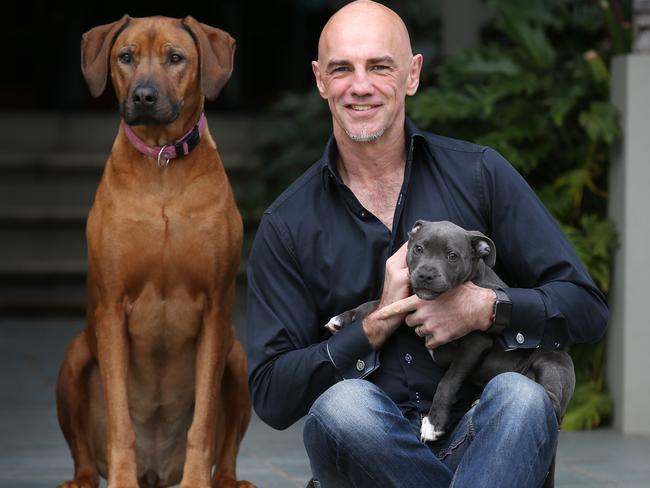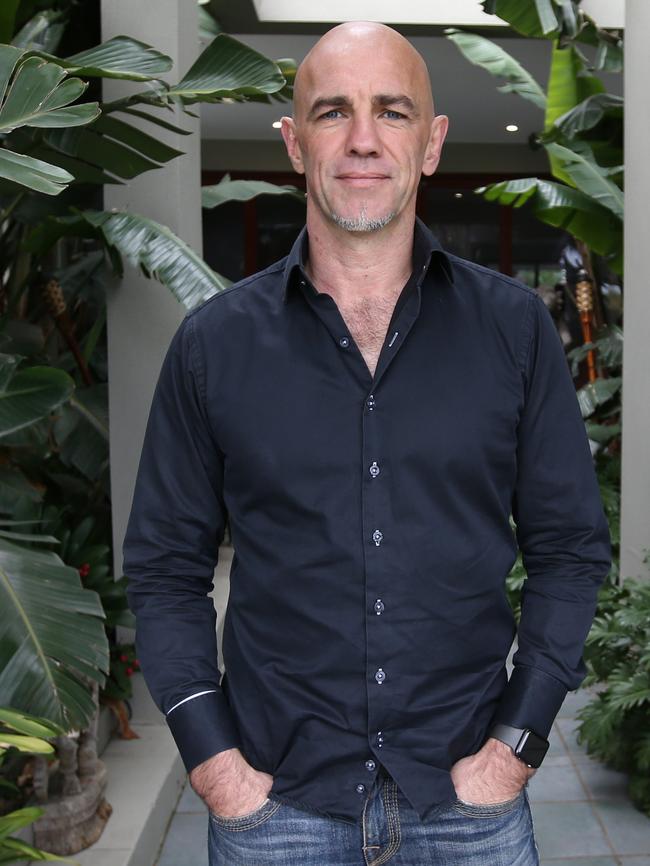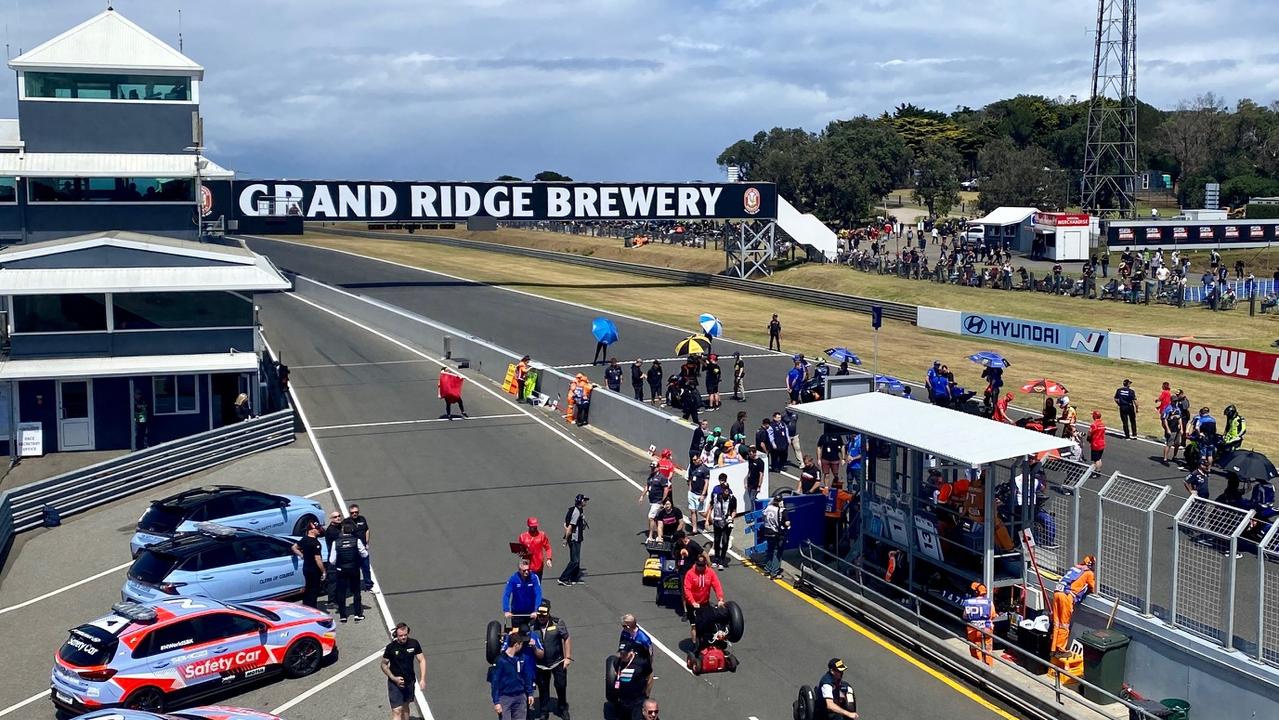Hamish McLachlan: Paul Taylor’s secret tips to have a great day
PAUL Taylor has spent years trying to work out what top performers do, and has tried to simplify his learnings so we can replicate them in the search for our best-performing, happiest and healthiest self, writes Hamish McLachlan.
News
Don't miss out on the headlines from News . Followed categories will be added to My News.
WE are all searching for our “best day”. At home, at work, with friends — wherever we are, and whatever we are doing, we’re all looking to be the best version of ourselves. Paul Taylor has spent years trying to work out what top performers do, and has tried to simplify his learnings so we can replicate them in the search for our best-performing, happiest and healthiest self.
SWIM CHAMP BRONTE CAMPBELL IS POETRY IN MOTION
EDDIE MCGUIRE, THE BOY FROM BROADY TURNED EDDIE EVERYWHERE
JOHN ROBERT BELL ON ESCAPING A POW CAMP
HM: You’ve been an airborne anti-submarine warfare officer and a helicopter search-and-rescue crew member and have undergone rigorous combat survival and resistance-to-interrogation training … what do you do now?
PT: I now refer to myself as a “pracademic” — essentially, I take academic research and translate it into programs and information that people can use to try to make their everyday lives better in some way.
HM: What did you learn about your own limits when undertaking combat survival and resistance-to-interrogation training?
PT: I learnt that you don’t know your limits until you are taken well outside your comfort zone — and you have no option to opt out. The course that I did was called AIR 427. It’s a pretty gruelling 10 days — no food except a chicken, which was live when we got it, and that was between four of us. Very little sleep, freezing cold the whole time, walking hundreds of kilometres, being hunted for the last five days, and then going through the shock of capture and enduring 12 hours of interrogation, stress positions, horribly loud white noise … it was everything you don’t think you can endure, all at once. There were quite a few times when I thought I couldn’t take any more and then you just find that extra something inside you. There were a few guys who I thought would do pretty well, and a couple of them came into the room in absolute pieces. Then there was one guy who I was pretty sure would not last the course, and he walked into the room in the best shape. He had a lasting impression on me and made me resolve not to judge people too quickly — because it is only under extreme pressure that you see people’s true capabilities.

HM: How far do you think most of us end up pushing ourselves?
PT: I would generalise and say the average person doesn’t push themselves anywhere near their capacity. That’s not a criticism, as we’re wired for economy. But we grow most when we are out of our comfort zone. Leaning into the discomfort, rather than shying away from it, is what stimulates adaptation — and adaptation means growth.
HM: What about athletes pushing themselves?
PT: The same. The body and brain will only adapt when they are stimulated to. Most of us have no idea what we can really achieve because we’ve never been in situations where we have to find a deep, deep well of inner resource. It takes a certain kind of person to push themselves through layer after layer of discomfort …. and then keep pushing.
HM: You’ve spent much of your life analysing the world’s best performers. Are there clear patterns and trends with people who are successful?
PT: Absolutely. One is their attitude to failure and mistakes — in the aircrew world where I spent eight years, there is a very strong culture around learning from your mistakes and the mistakes of others. This culture developed because mistakes are often very costly when you fly. High achievers learn from their mistakes and those of others, and
avoid them.
HM: What else?
PT: They have a huge focus on 1 per centers. This sounds a bit cliched, but it’s so true. At these upper echelons, a 1 per cent improvement can have a huge functional outcome — so the really top, top people focus on those 1 per centers.
HM: And?
PT: An uncompromising drive to what I call mastery. This is simply about doing something that you’re good at and striving to get better and better,
but not stopping at being great.
HM: I once read, “If you want to change the world, make your bed in the morning”. What does this mean?
PT: Ha. This is quite simply about achieving the first task of the day, and priming your brain to be task-focused. It’s also about a sense of discipline, and about doing the little things, which in turn makes you more likely to do the big things.
HM: You have found seven things that most high achievers do regularly. Let’s consider some — a daily workout?
PT: There is so much research into the positive effects of exercise on the body and brain, that I can say this unequivocally — if you do not engage in regular vigorous physical activity, there is not a snowball’s chance in hell that your brain, and your metabolism, are functioning optimally. If there was ever a magic pill, it’s exercise. And it doesn’t have to be long.

HM: A cold shower?
PT: People will think, “Why on earth would I do that?” A recent study showed that those who had a cold shower at the end of their warm shower, of either 30, 60 or 90 seconds duration, had a 29 per cent reduction in sickness over the year. And if they also exercised regularly, this reduction in sickness increased to 55 per cent!
HM: What do peak performers do mentally that many don’t?
PT: They are masters of mental rehearsal. They imagine the best version of themselves — they write down some of their best traits, and effectively crystallise them and bring them to life. They then take this a step further, and create a “super” version of themselves by writing down the traits of people who they admire and add those assets to their list. They then try to bring them to life.
HM: How?
PT: They mentally rehearse being this person — before they go to work, or on to the sporting field or before meeting friends. And if you have a family, the most important time to do this is before picking up your kids from school or coming home from work. Ask yourself, ‘What version of me would my partner or spouse or kids want to see walk into the house?’
HM: People tell me not to have a screen in my bedroom — digital detox.
PT: Listen to those people, Hamish! Firstly, interacting with any screen within 30 minutes of going to bed reduces melatonin by almost 30 per cent — meaning we’re less likely to get to sleep. Researchers have also shown that if you have the phone beside your bed, your brain is in a more stimulated state. Teenagers with a device in their bedroom sleep more than an hour less, and have double the risk of mental health issues. Now try telling your teen they can’t have their phone in their bedroom if you have yours in there!
HM: You speak a lot about gratitude.
PT: Research has found that those who regularly practised gratitude had more positive emotions, enhanced wellbeing, more optimism, less envy, were less materialistic, less anxious and less depressed and had more empathy and were more forgiving. That’s a pretty cool list — and it’s all free! All it takes is two minutes a day to write down or talk about things you’re grateful for.
HM: Great advice. I’ll keep having the cold showers too.
PT: You doing it?
HM: Yep — 30 seconds at the end — started to love it.
To find out more Paul has designed an App for companies to improve health & wellness based on ingraining habits and rituals in their staff. You can find out more at https://ritualize.com/


